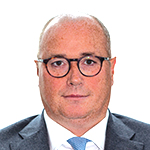Evolution or revolution?
CommentDiffering approaches to bond investing can be beneficial at different stages of the economic cycle. Mitesh Sheth of Henderson Global Investors outlines the challenge facing portfolio managers and identifies strategies that could help manage the yield/risk conundrum
Many local government pension funds (LGPF) find themselves in a challenging position in relation to their fixed income portfolios. They have enjoyed an extended run of strong returns from bond markets and recognise that at some point this will turn. Corporate bonds, an important driver of these returns, offer attractive yields but are exposed to the direction of interest rates. We are challenging the traditional approaches to investing in fixed income to balance the need for yield and capital preservation within a single portfolio.
Traditional “long-only” bond funds, eg, funds managed against government, corporate or aggregate bond indices ultimately depend on getting one or two big market calls right – usually the direction of interest rates and the credit risk premium. This remains the most common approach to bond investing globally, though the potential for rate rises and market volatility weighs heavily on clients’ minds given traditional funds are highly correlated to markets. At the same time, traditional index benchmarks are being challenged given some of the most indebted countries and corporates account for the highest weightings.
There has been a growing trend, especially since the financial crisis, towards “Buy-and-Manage” credit funds (as well as Total Return Bond funds and Credit Opportunity funds). These funds invest in a broad range of bond asset sectors and asset classes on primarily a long-only basis to maximise yield/income with limited sensitivity to interest rates.
These have been a great way of capturing depressed valuations, illiquidity premia and ultimately yield from a diversified low turnover bond portfolio. In picking managers, it is security selection and credit analysis skills that matter most. Though these products can offer capital protection if held to maturity with no defaults, they are also correlated to the market and are, therefore, exposed to markto- market risk.
At the other end of the spectrum we have seen the development of absolute return and fixed income macro hedge funds. Absolute Return Bond funds (ARB funds) exploit the breadth of fixed income markets aiming to generate positive returns throughout the cycle, using tight risk budgets to reduce volatility and preserve capital. Manager selection is important given the reliance on skill.
Fixed Income macro hedge funds are similar in that they aim to be more market neutral and, therefore, lowly correlated to the market in general. Fund manager selection is absolutely key, as performance rests on the skill of the manager in a handful of big macroeconomic decisions.
Each of these approaches to bond management can be desirable at different parts of the economic cycle, as they respond differently to market shocks and volatility. In stable interest rate environments, traditional funds and buy-and-manage bond funds allow investors to benefit from earning yield. However, in risin interest rate environments ARB and macro funds can avoid price erosion.
The conundrum you face
A buy-and-hold investment grade corporate bond fund would yield about 3.8%¹ today, similar to an ARB fund returning around cash plus 3.0% per annum (given the low cash rates). Some macro hedge funds will aim to achieve significantly higher returns albeit by taking higher risk.
The potential to earn positive returns in absolute return funds regardless of whether bond prices are rising or falling is undoubtedly attractive. However, in the US and Europe where cash (Libor) rates are low and yield curves steep (which could continue for some time) investors are not keen on switching directly out of traditional bond funds into ARB funds – the yield sacrifice is too great. Lower-rated credits and emerging markets offer higher yields, but also considerably more volatility. This is a difficult position, with no easy solution.
The “best of” collection
We believe that many LGPF investors’ long-term needs would be better met by an approach that combines the best of buy-andmanage, total return, absolute return bond and macro hedge funds; a global, flexible and dynamic bond approach that can deliver high riskadjusted returns from fixed income in different market environments. This requires flexibility in both asset allocation and crucially in risk budgeting.
The amount of risk taken must vary depending on the market environment rather than maintaining a static risk budget over time. This would allow clients to enjoy the yield available from a diverse exposure to different fixed income asset classes, with the confidence that their manager is looking to hedge the underlying market risk when required. The drivers of risk in the portfolio, including the mix between alpha (manager skill) and asset allocation (market beta) should vary to reflect both cyclical and longer term structural themes.
We would currently favour some floating rate asset-backed securities which help insulate returns from rising rates in the future. We would also hold more defensive noncyclical companies with strong balance sheets, from both the investment grade and high yield universes, as well as government bonds from developed and specific emerging markets. These would not be tied to an index and so would not be constrained by any related duration bias. This “core” would be combined with simple and liquid long-short strategies across interest rates, currency and credit markets to add returns and bring diversification – particularly valuable in volatile, sideways trending markets where outright directionality may not be rewarded. Critically, the portfolios should also look at various ways of hedging the underlying market risk – dynamically assessing the need and method of reducing risk at the appropriate times.
Achieving this would be nothing short of a revolution for bond managers. The reason is that buyand- manage, total return, absolute return and macro are rooted in different underlying bond manager styles: some of these skills are typically found in retail teams – managing income and strategic bond funds; some in more institutional teams – managing relative return and absolute return funds; some on structured credit and advisory desks and others in hedge fund teams – managing macro funds.
At Henderson we believe that we can bring together these different styles and manager skills to collaborate in delivering a global, flexible and dynamic bond solution which will meet our clients’ longer term needs. Whilst this is a formidable challenge for most, the prize is certainly worth it.
A single portfolio that delivers a less volatile return stream for our clients over time without sacrificing yield could be an important element of fixed income portfolios for LGPS funds.
1. Merrill Lynch US Corporate Master Index. Bloomberg code C0A0, as at 29 June 2011
More Related Articles...
Published: November 11, 2011
Home »




